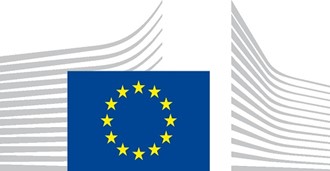Current Projects
Fisher folk making circular economy work for the western Tonle Sap Lake project (FOSTER)
Project Description
While the Tonle Sap (TS) lake is the one of the top four fishery production area in the world and contribute to majority of Cambodia freshwater production, the lake and its this basin are increasing pressure from multiple threats including climate change (CC), illegal over-exploitation of fisheries and wildlife, forest encroachment and cutting, and upstream dam-building. As the communities living the floating villages in the WEST of TS floating forest area of the Tonle Sap Basin Reserve (TSBR) are highly dependent on the lake’s water and related resources, these threats are contributing to high levels of poverty, food insecurity and pending environmental collapse in the region. Ensuring the access to education remain a pressing challenge.
Nearly third of children between the age of 5 and 17 in the TSBR are not enrolled at school, with 32% of these enrolled reported at risk of dropping out because of lack of finance support, learning difficulties, or lack of transport. Children in TSBR have limited access to quality early childhood education (ECE) services, with only a third ever attended preschool. Given the absence of sufficient government schools, many local volunteers run community-based schools, however, their inadequate infrastructure and lack of teaching qualifications make them ineligible for government support. Access to clear water and sanitation is also limited, According to a recent survey, two third of HHs in the TSBR still drink water from unsafe sources, and only 30% of HHs treat water before drinking. Access to modern sanitation system is limited, 59% of HHs do not use toilets and an additional 24% use latrines that directly discharge waste in the open. The situation is worse amongst floating and flood plain village, where latrine affixed to floating house discharge waste and fecal matter directly into the lake. This has led to widespread prevalence of waterborne diseases and chronic conditions of gut inflammation leading to children stunting in floating village communities. Fishing catches in the TS have declined subaerially in recent years due to mess over-fishing and changed river flow patterns resulting from CC and dam construction, among others, exacerbating the economic vulnerabilities of the fishing HHs of the East TSBR and highlighting the urgent need for alternative livelihood strategies that can both generate income and reduce stress on aquatic resources. The vulnerabilities have been heightened by CC-included droughts and wildfire, and the Covid 19 pandemic witch has increased unemployment, income losses and return migration, further increasing risks of indebtedness, marginalization and displacement among fishing communities in the regional. The TSBR has enormous eco-tourism potential but the sector in underdeveloped, suffer a lack of tourist infrastructure and hospitality services, and has not featured highly in the national public policies or financial priorities. Agriculture, NTFPs and fish processing are other income generation routes in the target areas but community lack skills for adding value, marketing and business management. Access to affordable energy remains a major impediment to productivity, with a third of HHs still of the grid, witch limit opportunities for development of non-primary enterprise and services.
Objectives:
- Project’s overall objective: Contributing to the social-economic development and resilience of fishing communities in Tole Sap Basin Reserve (TSBR).
- Specific objective: to improve sustainable livelihoods and increase access to essential service for fishing community in the west of Tole Sap Basin Reserve (TSBR) and reduce the environmental pressure on the TSBR in the long term.
Key Activities
Output: 2.1 Baseline assessments of education condition and school mappings in target area carry out
Activity: 2.1.1 Conduct education assessment and school mapping of target area
Activity: 2.1.2 Conduct special needs screenings in target schools to identify children with physical and mental learning needs
Output: 2.2 Children and youth supported with inclusive education to access and attend school
Activity: 2.2.1 Implement school feeding program in target schools
Activity: 2.2.2 Provide sustainable transportation solution to improve children’s access to school
Activity: 2.2.3 Provide scholarship support to marginalized girls and boys
Activity: 2.2.4 Implement and multi-lingual supplementary learning program in school that are appropriate to children’s culture and needs
Activity: 2.2.5 Develop re-entry service for out of school children
Activity: 2.2.6 Implement accelerated learning classes for over age children
Activity: 2.2.7 Implement non-formal education for student with special needs
Activity: 2.2.8 Implement life skills learning in schools
Output: 2.3 Community based-preschools, primary schools and lower secondary school to supported to meet national standard and improve their capacity to improve early education, prevent drop-out and enable transition
Activity: 2.3.1 Rehabilitate/build primary schools and community-based preschools to child friendly standard
Activity: 2.3.2 Recruit and provide community preschool teacher with school readiness training
Activity: 2.3.3 Support community-based preschools to meet national qualification standards
Activity: 2.3.4 Conduct schools readiness training for preschool and primary school teachers
Activity: 2.3.5 Provide training and technical support on distance learning methodologies and non-formal education strategies and primary school teachers
Activity: 2.3.6 Train caregivers, youth and CBO’s on responsive and positive parenting skills for advocating for the needs of children’s education
Activity: 2.3.7 conduct workshop between school management, caregivers and local authorities to develop annual school planning for student retention
Activity: 2.3.8 Conduct school accountability audits and develop school support plan with CCs
Activity: 2.3.9 Implement Eearly Warning System (EWS) in target school for drop-out children
Target Group:
As the communities living the floating villages in the WEST of TS floating forest area of the Tonle Sap Basin Reserve (TSBR)
Target Areas:
Battambang, Banteay Meanchey and Siem Reap Province
Target School:
48 schools including 16 preschools, 20 primary schools and 12 lower secondary schools in 3 provinces
Start Date: January 1st 2022
End Date: August 31th 2024
Co-NGO Partners:
FACT AEA WCS SMP BSDA KAPE OEC CDPO WETLAND WORKS TS 1001 CEPA MAADS/PAVILLION CACC OKRA Solar Oxfam
Funded by:
The European Union

117
Preschool(s)
178
Primary Schools
207
High Schools
2
Higher Education Institutions
163,072
Students
4,487
Teachers/Directors
5,362
Stakeholders


